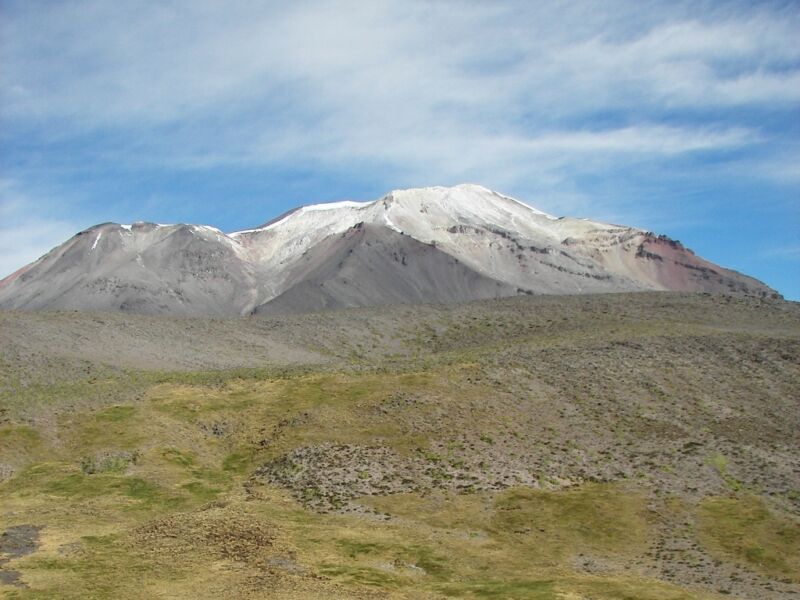

Inca priests used natural antidepressants for nefarious purposes
source link: https://arstechnica.com/science/2022/05/inca-priests-plied-child-sacrificial-victims-with-drugs/
Go to the source link to view the article. You can view the picture content, updated content and better typesetting reading experience. If the link is broken, please click the button below to view the snapshot at that time.
Yeesh —
Inca priests used natural antidepressants for nefarious purposes
Cocaine and one of the main ingredients in ayahuasca may have kept victims calm.
Kiona N. Smith - 5/16/2022, 4:09 PM

A recent toxicology analysis of the 500-year-old remains of two small children sacrificed in a ritual atop southern Peru’s Ampato volcano showed that the children’s hair and fingernails contained traces of cocaine, as well as two chemical compounds from a flowering vine that’s a key ingredient in the psychedelic beverage ayahuasca.
The compounds in question, harmine and harmaline, are both part of a group of antidepressants called MAOIs (monoamine oxidase inhibitors). The only possible place the Inca could have found these compounds is the flowering vine known to modern science as Banisteriopsis caapi—and to the Indigenous Quechua people as “liana of the dead.” Famously, the liana is one of the two main ingredients in a ritual drink called ayahuasca, which can induce hallucinations or an altered state of mind.
But the analysis found no trace of the compound DMT (N,N-Dimethyltryptamine), which makes ayahuasca such a powerful hallucinogenic. That compound comes from the other main ingredient in ayahuasca, a shrub called chacruna (which, incidentally, is a relative of the plant that gives us coffee).
Its absence could just be a quirk of chemistry. Toxicology studies of at least one sacrifice victim from another site also found no DMT but did find a chemical compound that’s produced when the body metabolizes DMT. That supports the idea that DMT may not be one of the chemicals preserved in keratin, which means University of Warsaw archaeologist Dagmara Socha and her colleagues can’t rule out ayahuasca being given to the kids at Ampato.
Still, the lack of DMT in the Ampato victims’ hair and nails could mean that they drank something that contained the liana of the dead but not chacruna. And if that’s the case, it seems very likely that the goal wasn’t to give them religious hallucinations but to keep the children calm on the long procession toward their deaths.
Advertisement“If so, this would be the first example of the conscious use of the antidepression properties of ayahuasca beverage consisting primarily, if not totally, of Banisteriopsis caapi,” wrote Socha and her colleagues in a recent paper.
They saw it coming
The two children, both between 6 and 7 years old, died as victims in an Inca ritual called capacocha. Throughout the Inca Empire, priests sacrificed young women and children as young as 3 years old to local deities called huacas.
For weeks before the sacrifice, the victims knew exactly what was going to happen to them. Victims chosen from the far-flung corners of the Inca Empire had to gather in the capital, Cusco, before setting out on long processions to the places where they would die. Sometimes that meant a long journey back home, and sometimes it meant traveling to some other province of the empire.
That experience must have been overwhelming for young children, even without the terror of the sacrifice hanging over their heads. And it simply wouldn’t do to have the intended victim, who was meant to be pure and beautiful, crying about it. Spanish colonizers, who described the rituals they witnessed, wrote that the victim’s mood was as important as their appearance; sacrifices were supposed to go happily to the huacas.
The solution? Sedate the victims with drugs and booze. According to the Spaniards, Inca priests kept their doomed victims happy and calm with a steady diet of an alcoholic drink called chicha.
Toxicology studies on the mummified remains of several capacocha victims from around Peru found evidence that they had also chewed coca leaves for weeks before their deaths, and some died with their last dose still in their mouths. Often, it seems that the children were chewing more and more coca as the ritual drew closer. In the hair of one victim at another site, archaeologists found a compound called cocaethylene, which forms when cocaine combines with alcohol in a person’s body.
In other words, Inca priests spent several weeks drugging small children into cheerful compliance until it was time to ritually murder them. The horror of that scenario isn’t offset by the fact that there was evidently a fairly advanced level of pharmacological knowledge behind the choice of drugs.
Page:
Recommend
About Joyk
Aggregate valuable and interesting links.
Joyk means Joy of geeK